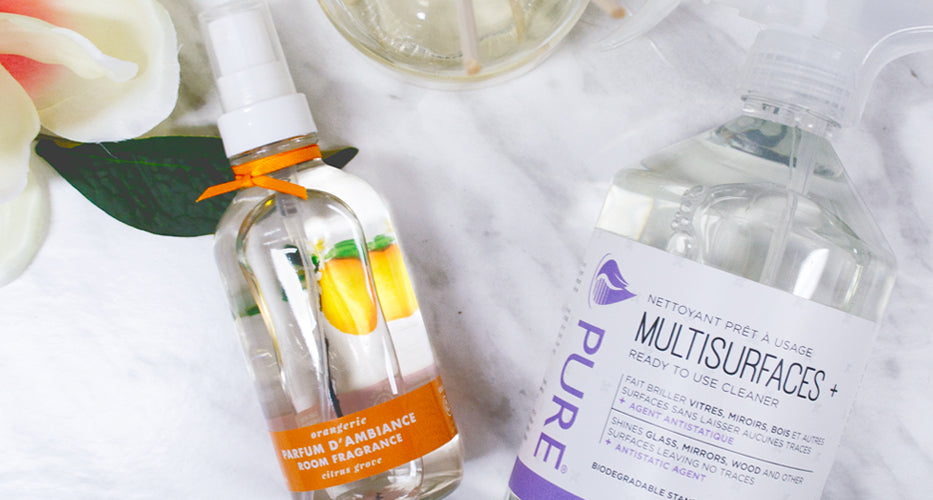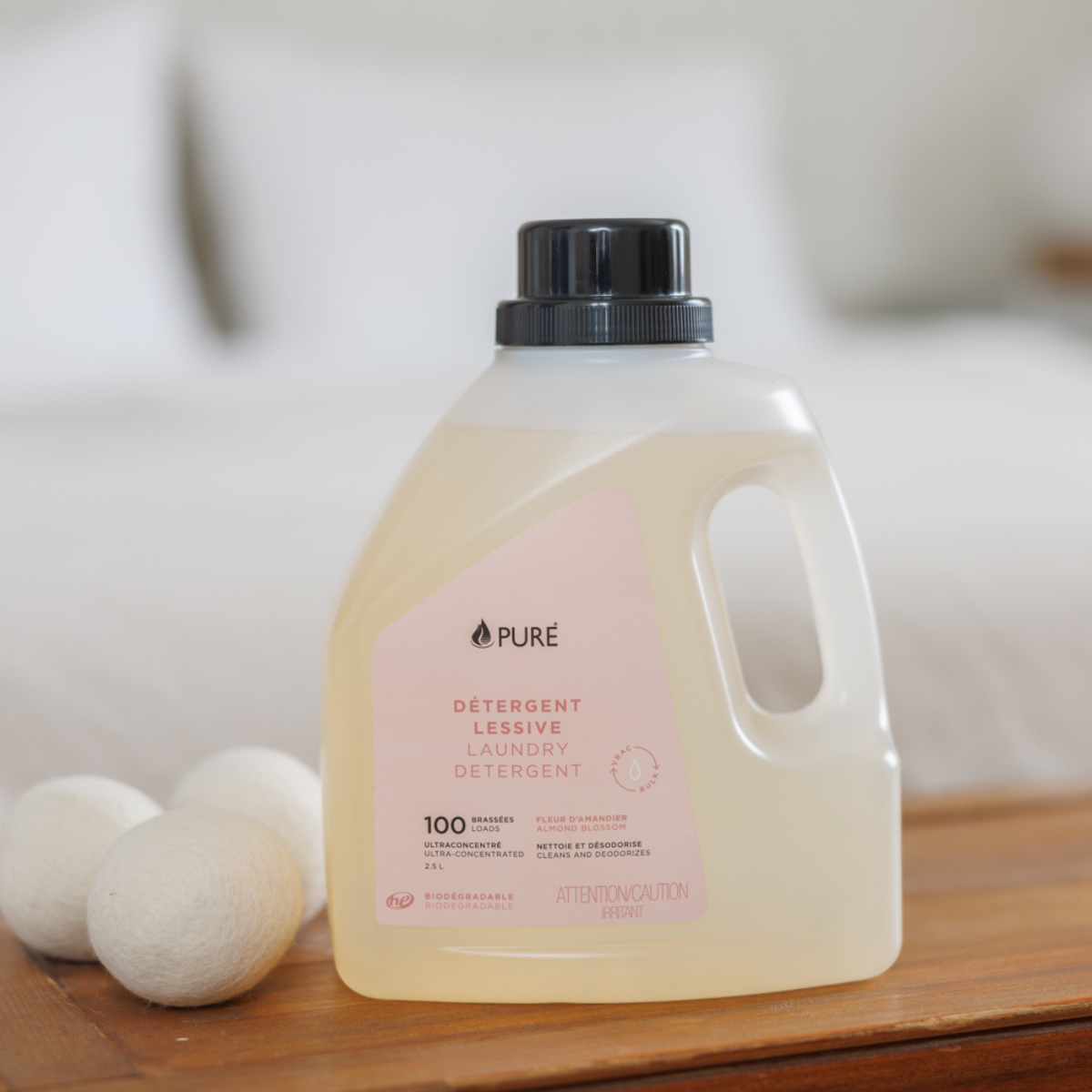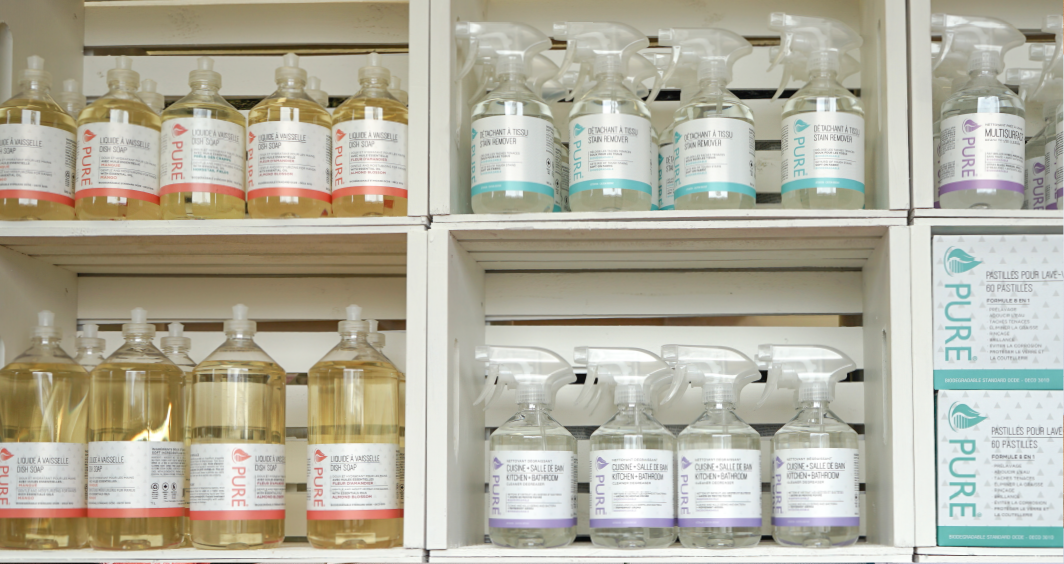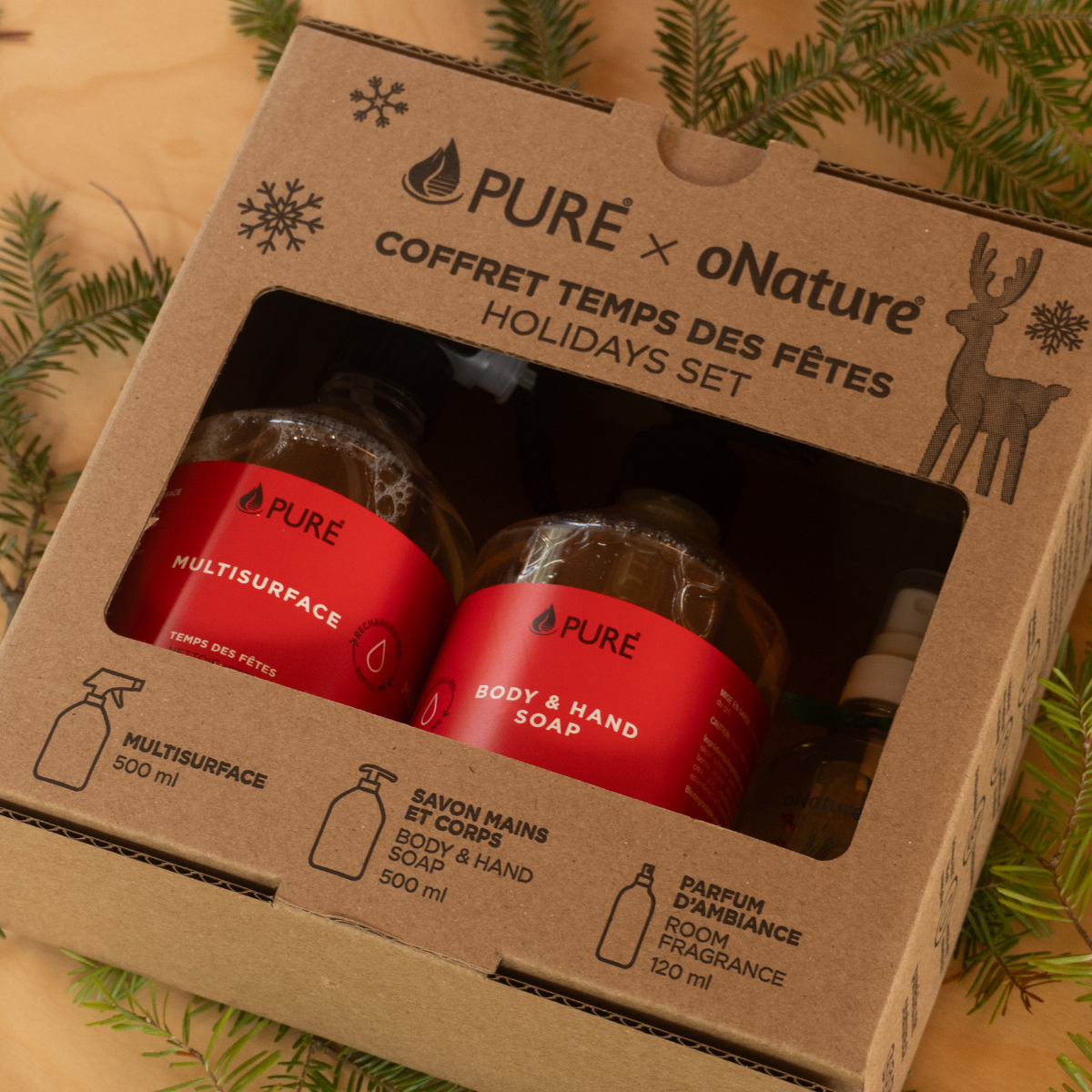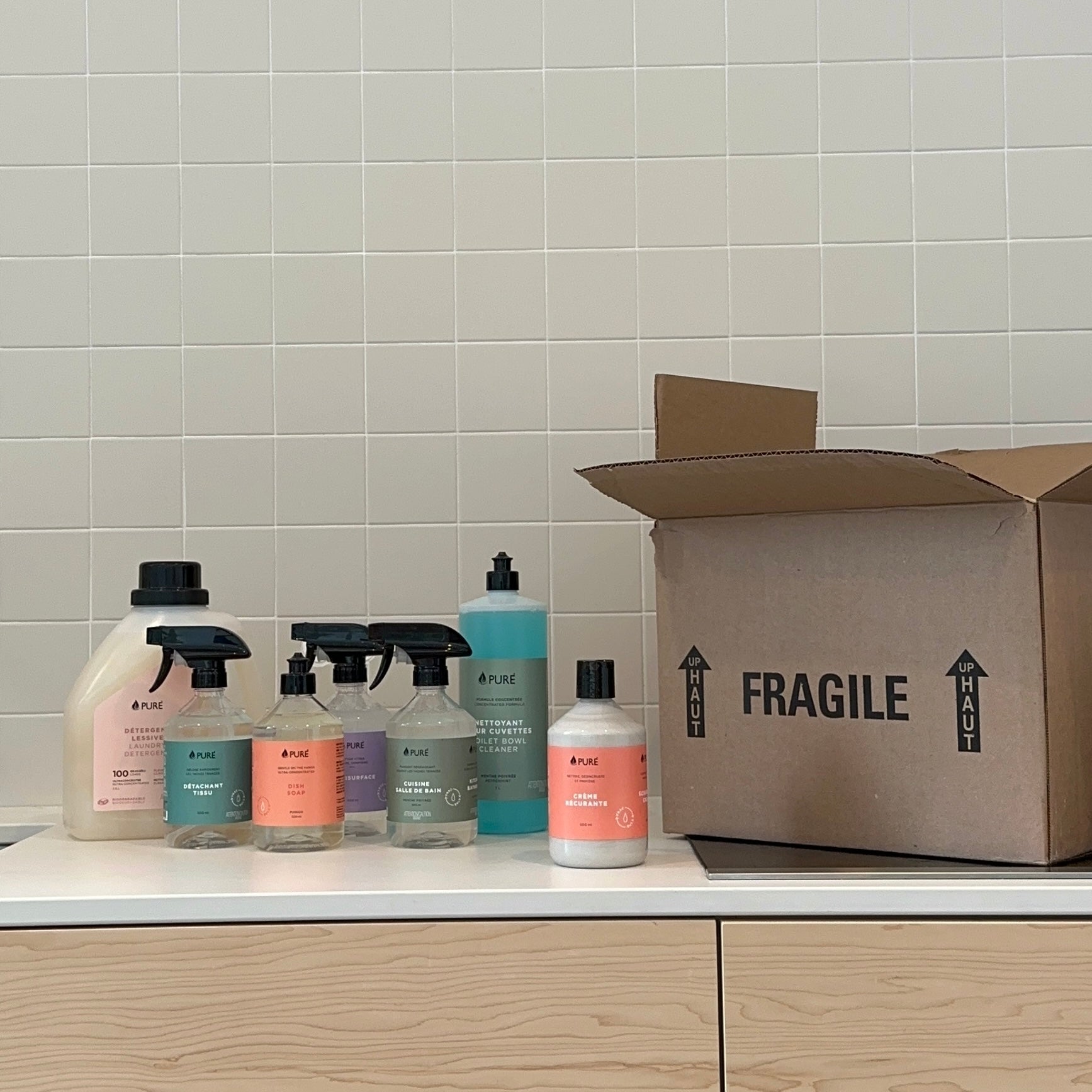Here are some interesting questions to ask yourself. As you prepare to clean your home, how many different products will you use? Where do these products come from? Do you know their composition? This little exercise will allow you to see what's cluttering your cupboards and perhaps even make some somewhat disconcerting discoveries.
Like most Canadian families, you use between 20 and 40 liters of all kinds of cleaners in your home each year for cleaning, laundry, disinfecting, and freshening up your home. Many of these household products contain potentially harmful substances that are absorbed by your skin and respiratory tract. They have names that make us lose our Latin, and the list is long: ammonia, benzene, cresol, nonylphenol, formaldehyde, pesticides, phthalates, toluene, and more.
In concrete terms, every time you spray, spread, or mop with household products containing these ingredients, you are releasing toxic substances onto the surfaces and air in your home. According to a study by George Washington University, more than 45 substances harmful to health are hidden in the dust in our homes, with 10 of the most toxic being present in 90% of homes.
Although it remains to be proven beyond doubt that these substances can cause several major health problems (asthma, cancer, chronic diseases or serious allergies), repeated exposure to these substances has been shown to contribute to a host of symptoms: headaches, fatigue, shortness of breath, sinus congestion, coughing, sneezing, skin irritation, dizziness, nausea, irritation of the eyes, nose and throat.
It is even more important to choose your household cleaning products wisely when babies and children live in the house because they are often in contact with floors and countertops and they are often wearing freshly washed clothes. Pets are no exception either...
Are we all already affected by these everyday products? Perhaps, but there are solutions, and they don't involve resorting to lemon and vinegar.
A good idea is to buy products made by companies that have chosen not to use these toxic substances and that demonstrate transparency by clearly indicating on their containers all the ingredients used in the manufacture of their products. These companies comply with international environmental standards and are often certified by an external organization like Ecocert. This is the case for oNature brands, which offer healthy home fragrances, and PURE, which offers biodegradable cleaning products. These brands are made in Quebec and the formulations are free of harmful chemicals.
Here are the links to the brands' websites:
www.onature.ca
www.purebio.net
Here are some links to learn more about the toxicity of household cleaning products:
http://www.davidsuzuki.org/fr/
http://www.ewg.org/guides/cleaners
http://www.cnn.com/2016/09/14/health/toxic-chemicals-house-dust/index.html
http://ici.radio-canada.ca/premiere/emissions/les-eclaireurs/segments/chronique/14811/produits-nettoyants-dangereux-sante-environnement
SOURCES:
http://publichealth.gwu.edu/departments/environmental-and-occupational-health/ami-zota
ATSDR, 2004: 'ToxFAQsTM: Ammonia', http://www.atsdr.cdc.gov/toxfaqs/TF.asp?id=10&tid=2.
BURROWS, M., GRIFFIN, S., and STOFFMAN, L., 2009: 'Cleaners and Toxins Guide', Toxic Free Canada, http://www.toxicfreecanada.ca/pdf/Cleaners_Toxins_Guide_2009.pdf.
GORMAN, A., 2007: 'Household Hazards: Potential Hazards of Home Cleaning Products', Women's Voices for the Earth, http://www.womensvoices.org/wp-content/uploads/2010/06/HazardsReport.pdf.


